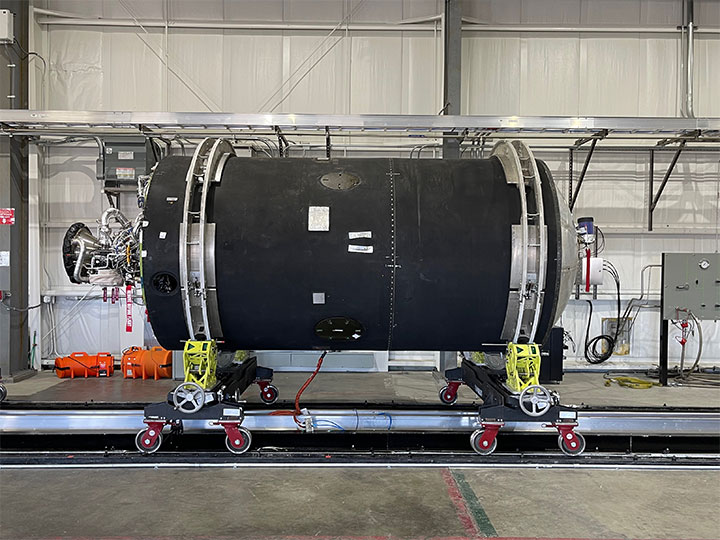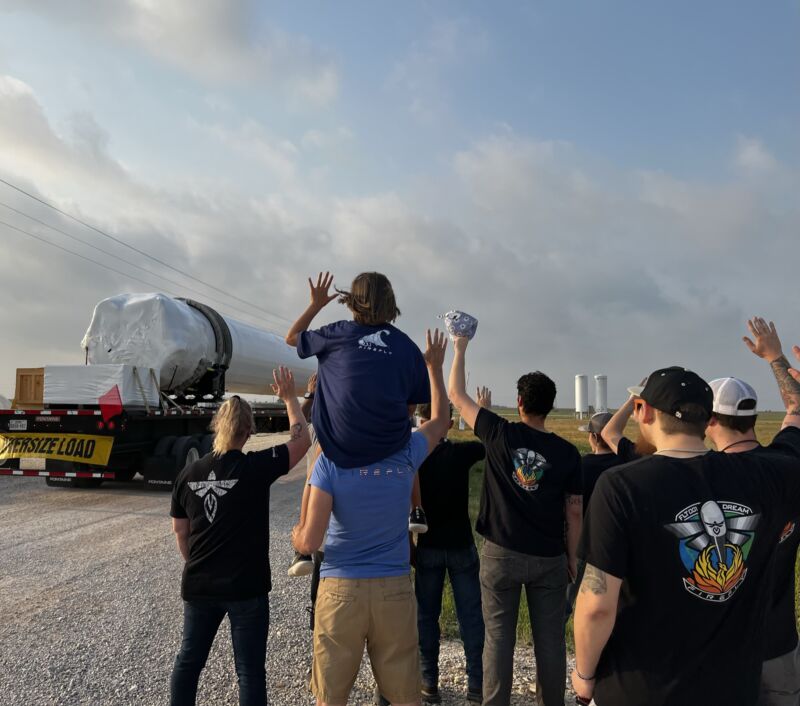Nine months have passed since Firefly's Alpha rocket launched for the first time, lifting off from Vandenberg Space Force Base in California. Unfortunately, one of the rocket's four main engines failed about 15 seconds into the flight, and the rocket was lost about two minutes later.
The period since then has been a difficult one for the company and its founder, Tom Markusic. In addition to dissecting the cause of the Alpha failure, Firefly also ran afoul of rules set by the Committee on Foreign Investment in the United States, CFIUS.
In December, the Air Force blocked Firefly from working at the Vandenberg launch site due to these CFIUS complications with the company's primary investor, Ukrainian Max Polyakov. Eventually, the issue was resolved this spring after Polyakov sold his interest in Firefly, and Firefly regained access to the launch site. But it was a messy and distracting situation at a time when Firefly needed to focus on reaching orbit.
Now, brighter times appear to be ahead of the company. Firefly emerged from this crisis with a second rocket ready to go for a summer launch. To put this all into perspective, Markusic spoke to Ars about Alpha's initial failure, the company's launch plans for the remainder of this year, and finding a new investor to replace Polyakov.
Alpha Flight One
During Alpha's debut flight last September, one of the rocket's four Reaver engines stopped firing after an electrical connector failed, closing one of the engine's main propellant valves. This sent a signal to the Reaver engine to shut down.
After the flight, Firefly engineers found that pins inside the electrical conductor had been subjected to higher than anticipated vibrations and sheared off. "Because this was a unique vibrational environment, this is probably a phenomenon we could only see in flight," Markusic said.
He explained that the engines on Alpha were some of the first Reavers the company had built, and they "ran a little rougher" than recent engines the company has built. Because the newer flight engines operate with fewer vibrations, he does not think the problem of the electrical pins shearing off will recur.
Nevertheless, the company has taken the precaution of moving the electrical conductor higher on the vehicle, where there are fewer vibrations, and also given it a dedicated mounting bracket to further isolate it. "That problem is not going to happen again," Markusic said.
Alpha Flight Two
Firefly noted one other issue on Alpha's first flight that it hadn't expected. As the engines moved and rumbled during ascent, the rocket's body began to oscillate in phase with the motion of the engines. This is known as the "tail wags the dog" phenomenon.
Engineers had not observed the rocket oscillating at the same frequency as the engines on the test stand, because the stand itself absorbed that motion. Markusic said that, because the engineering team now understands this phenomenon with Alpha, it can be addressed with some modest changes to the rocket's guidance and navigation software.
There are other reasons for confidence heading into the next orbital launch attempt. This is the second build of Alpha, so the hardware is more mature. A lot of the parts and sections of the booster simply fit better, Markusic said, making for a more solid overall build. There is also less wear and tear. Before the first Alpha launched, it had been test-fired 18 times. The second rocket has been tested once.
"We're feeling really good about this second mission," he said. "I fully expect the second flight to go to orbit, but we’re going to see minor anomalies." Probably his biggest concern is igniting and flying Alpha's second stage, which was not tested during the first launch.
The hardware for flight two is already on site at Vandenberg. Markusic said the company is still waiting for final range availability and launch approval from the Federal Aviation Administration, but there is a tentative launch date set for July 17.
A rocket with no place to go
Markusic founded Firefly in 2014 with the intention of joining the new space race to revolutionize access to orbit and bring down costs. However, he soon found out that running a launch company was an expensive proposition and had to shutter Firefly in mid-2016 for about half a year. That's when Polyakov swooped in to provide about $200 million and reboot the company.
"Firefly has been difficult from day one," Markusic said. "Every inch has been a struggle. But I think there’s a lot of character in this company, and we’re used to adversity."
Markusic did not expect success on Alpha's first flight, and he was pleased with the overall performance of the rocket's first stage. Following the flight, he and his team were eager to get Alpha back to the launch site for a second attempt to show what the rocket could do. In December they had completed production of the first stage of the next Alpha rocket.
By that time, in an effort to placate US regulators, Polyakov had stepped back from his day-to-day involvement at Firefly. However, he still retained significant ownership of the company. Then, late last year, the US Air Force and Committee on Foreign Investment decided that it wasn't enough and demanded that Polyakov sell his interest in Firefly. This led to a standoff for several months before Polyakov eventually and unhappily acquiesced. Following the sale he accused US regulatory officials of betraying him, saying, "I hope you now are happy. History will judge all of you guys."
This situation created a huge cloud of uncertainty over Firefly. Markusic needed to demonstrate that Alpha could fly, but he did not have access to the launch site for several months.
"The last nine months were definitely challenging," Markusic said. "One of the most frustrating things for me is we had that first stage ready to go to Vandenberg in December. It was actually on the trailer when I got a call from the Air Force to not ship it. We were really anxious to bounce back. Having that delay was really demoralizing, honestly. I always want us to get out and show our stuff."
Getting a second second chance
He also needed to raise money but had just lost his primary financial backer, and federal officials were deep in the company's books.
"The financial part of this business is always super hard," he said. "Sustaining a company is always a background stress. The last nine months, with the CFIUS issue hanging over your company, it makes it very difficult to have the investor conversations that you need to have to keep the company going."
Nevertheless, Markusic believed in his products. Alpha is a great rocket, he said, and the company has a contract with NASA to build a small cargo lunar lander, Blue Ghost. It's also developing an in-space propulsion vehicle. Financial salvation came earlier this year when AE Industrial Partners, a Florida-based private equity firm, stepped up to support Firefly.

Since 2017 Firefly has raised about $300 million, and the capital from AE has put the company on track to reach operational status with Alpha. In addition to July's test launch, Markusic said the third and fourth rockets are well into production, and if things go well Firefly will launch a total of three missions this year.
"We’ve been through a lot of hard things before," he said. "But the things I worry about most are actually just getting to show what we can do, as soon as we can. It’s a really competitive world out there, and I know we’re the most capable new team."
For the second time, it looks like Firefly will have a second chance to do just that.


3175x175(CURRENT).thumb.jpg.b05acc060982b36f5891ba728e6d953c.jpg)


Recommended Comments
There are no comments to display.
Join the conversation
You can post now and register later. If you have an account, sign in now to post with your account.
Note: Your post will require moderator approval before it will be visible.